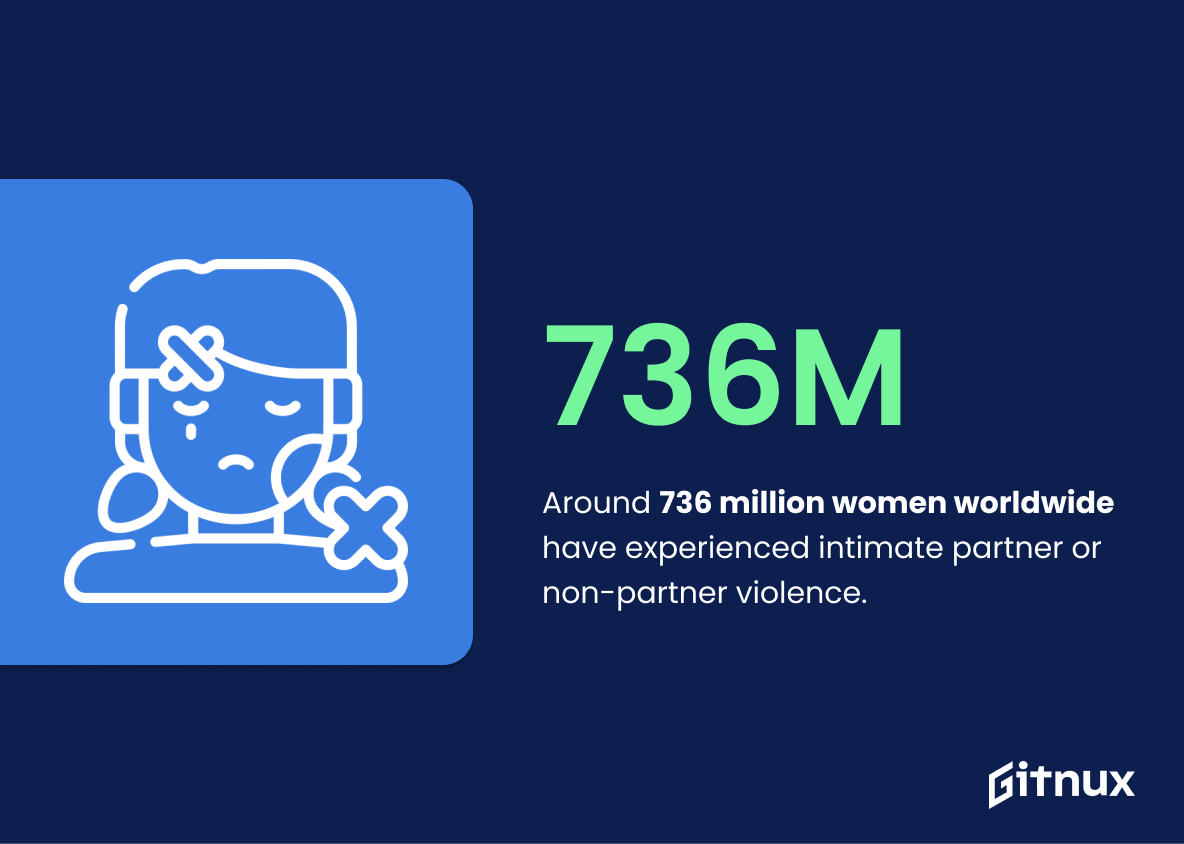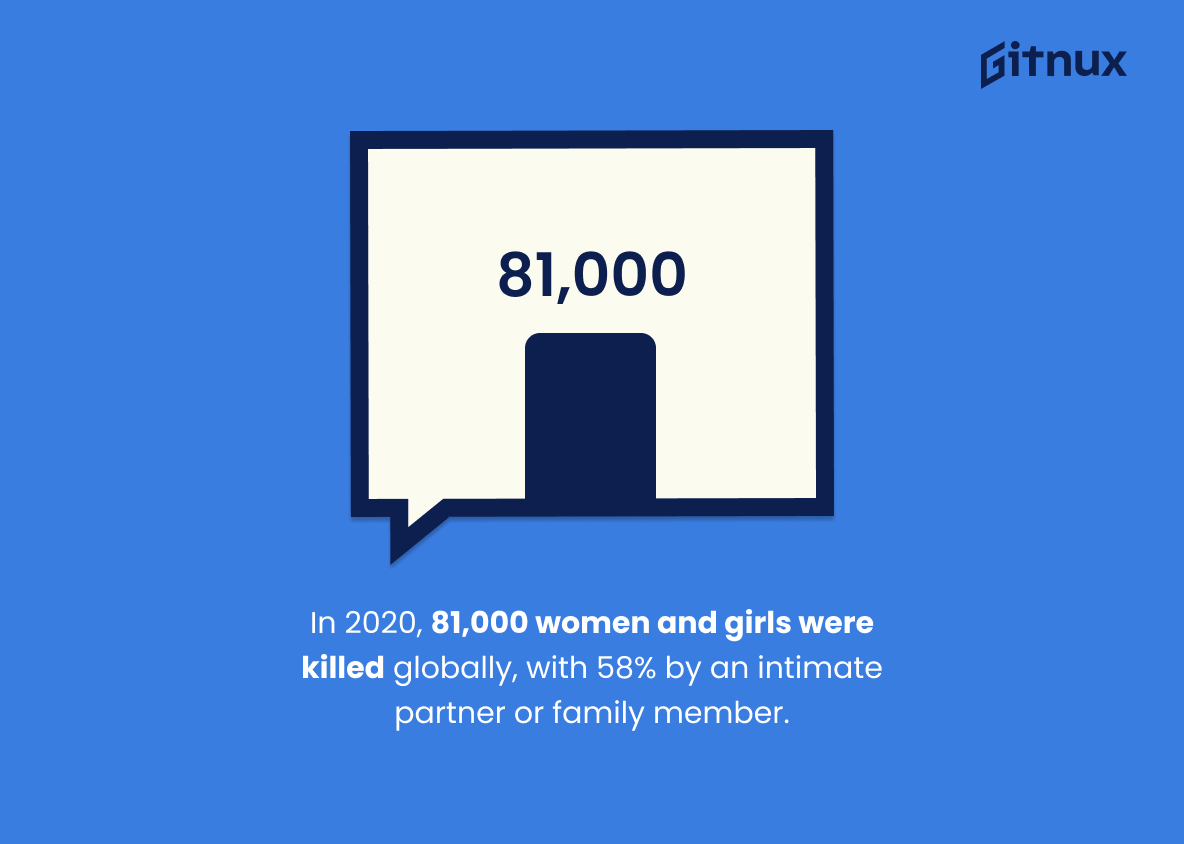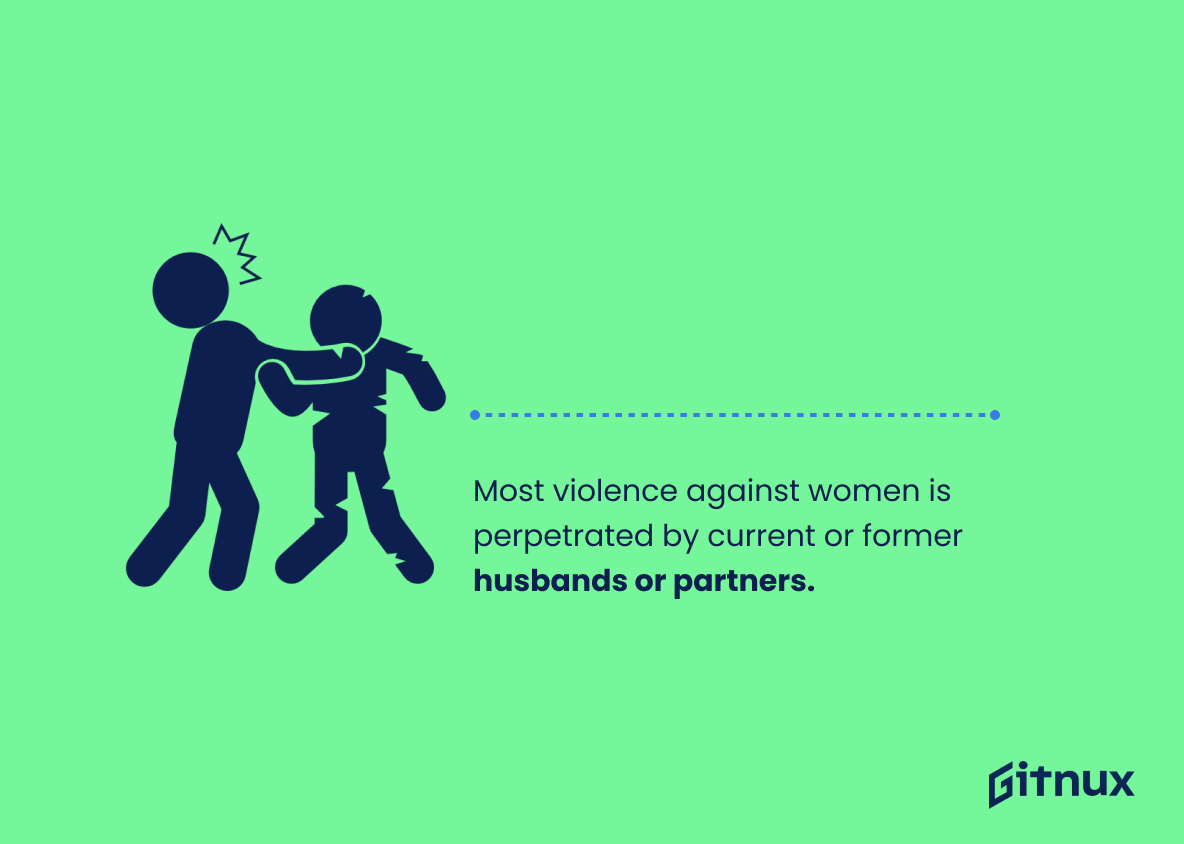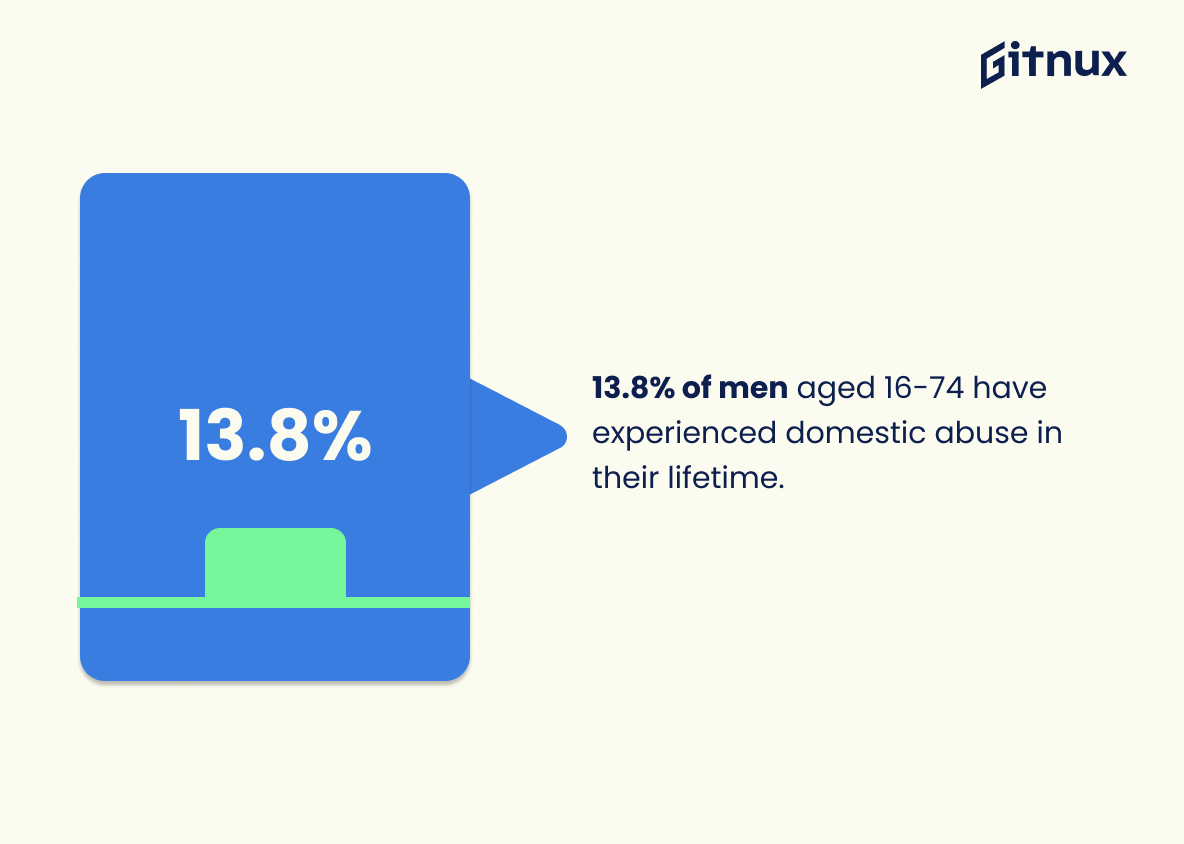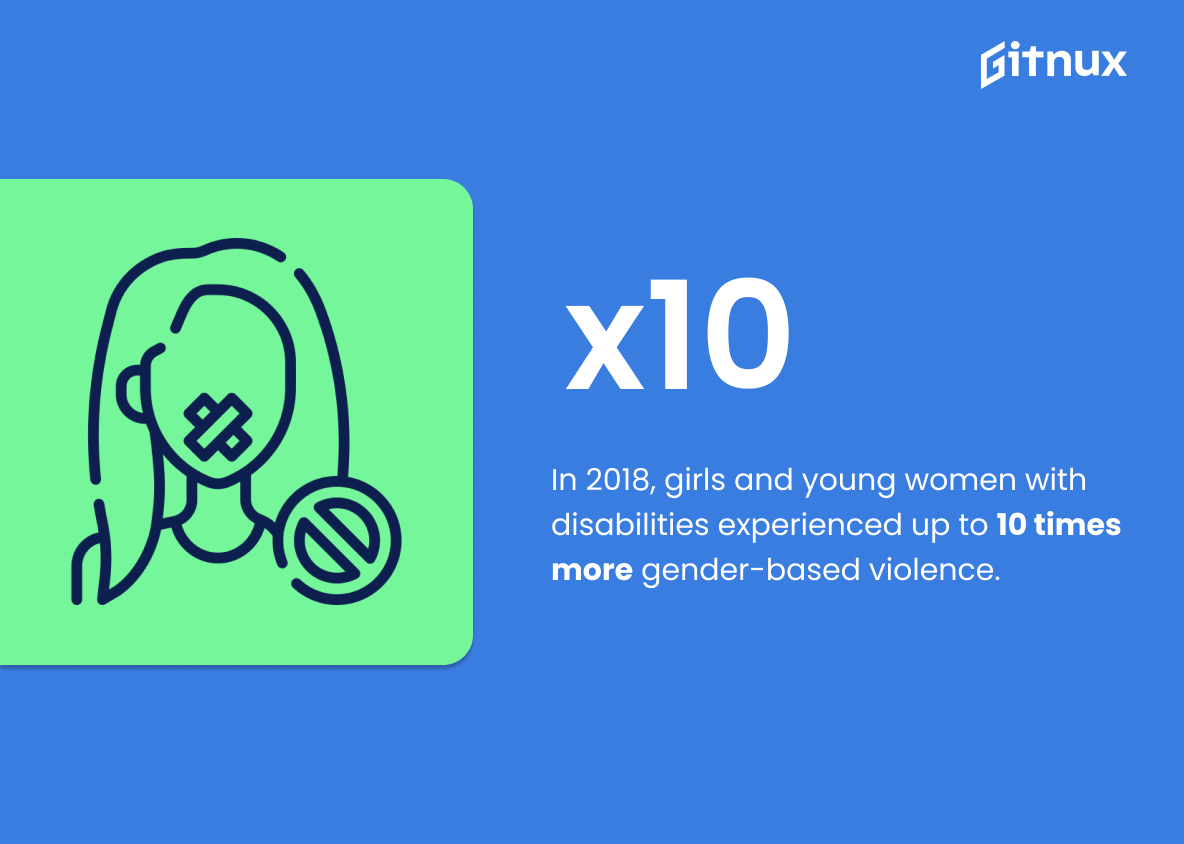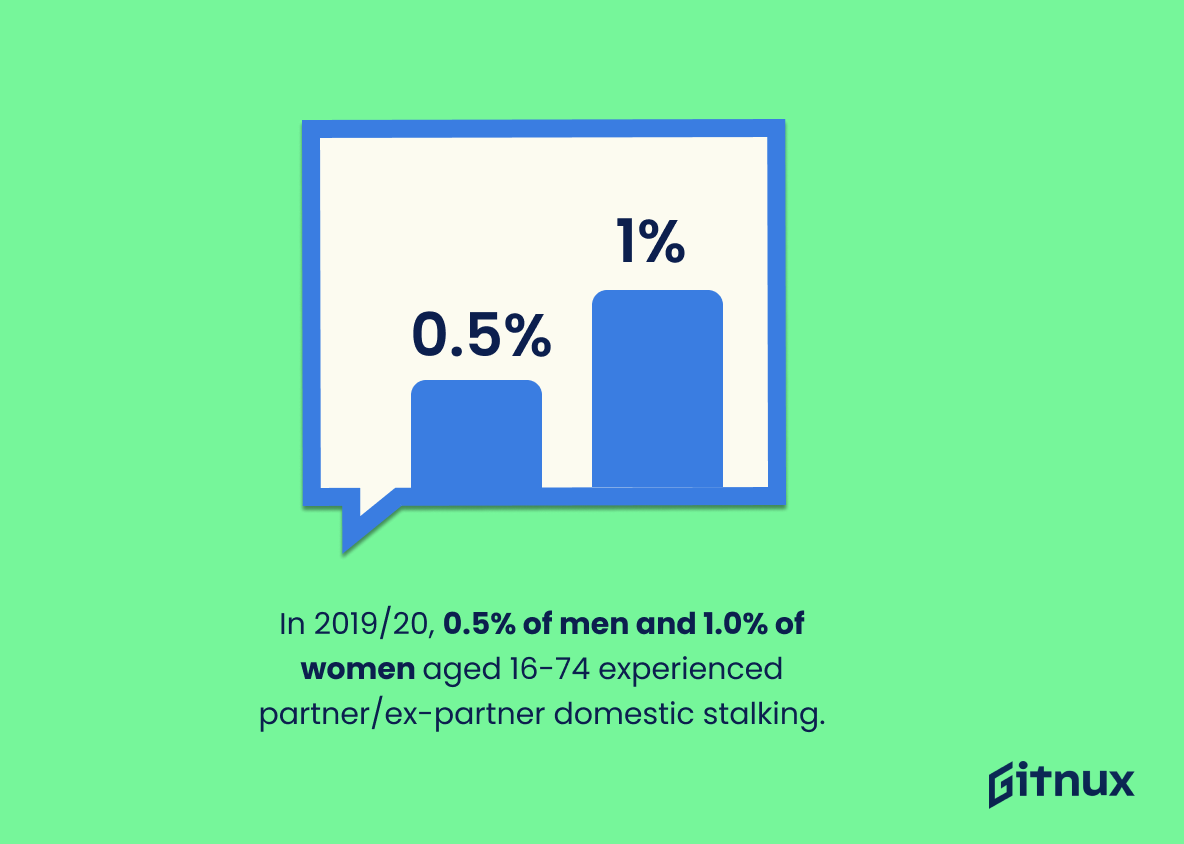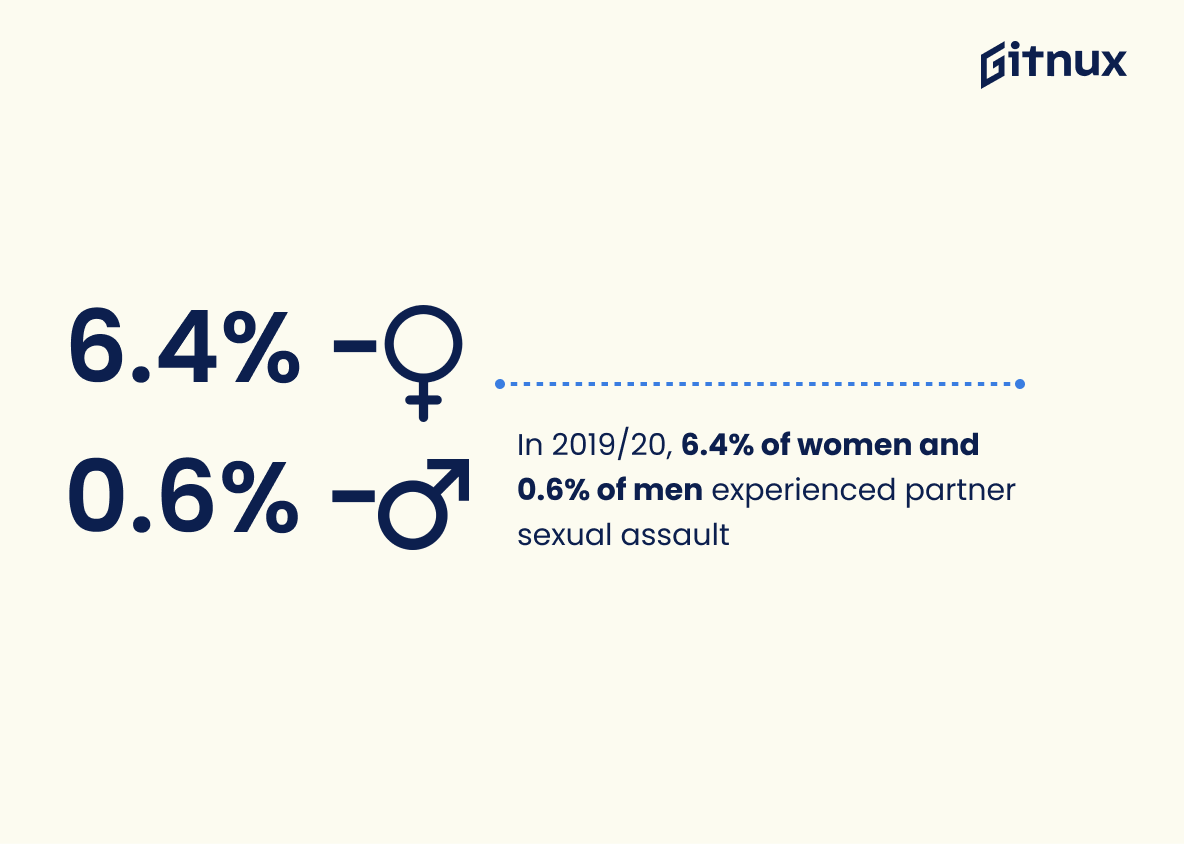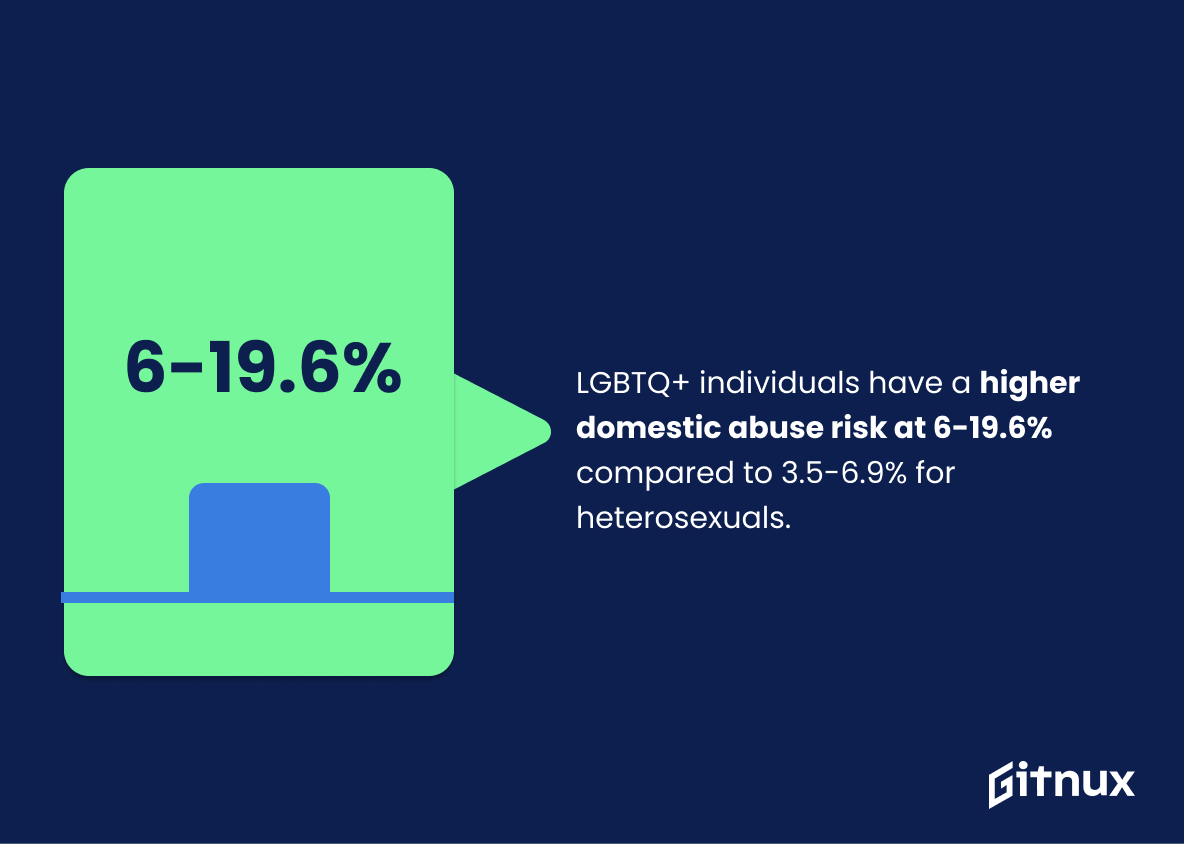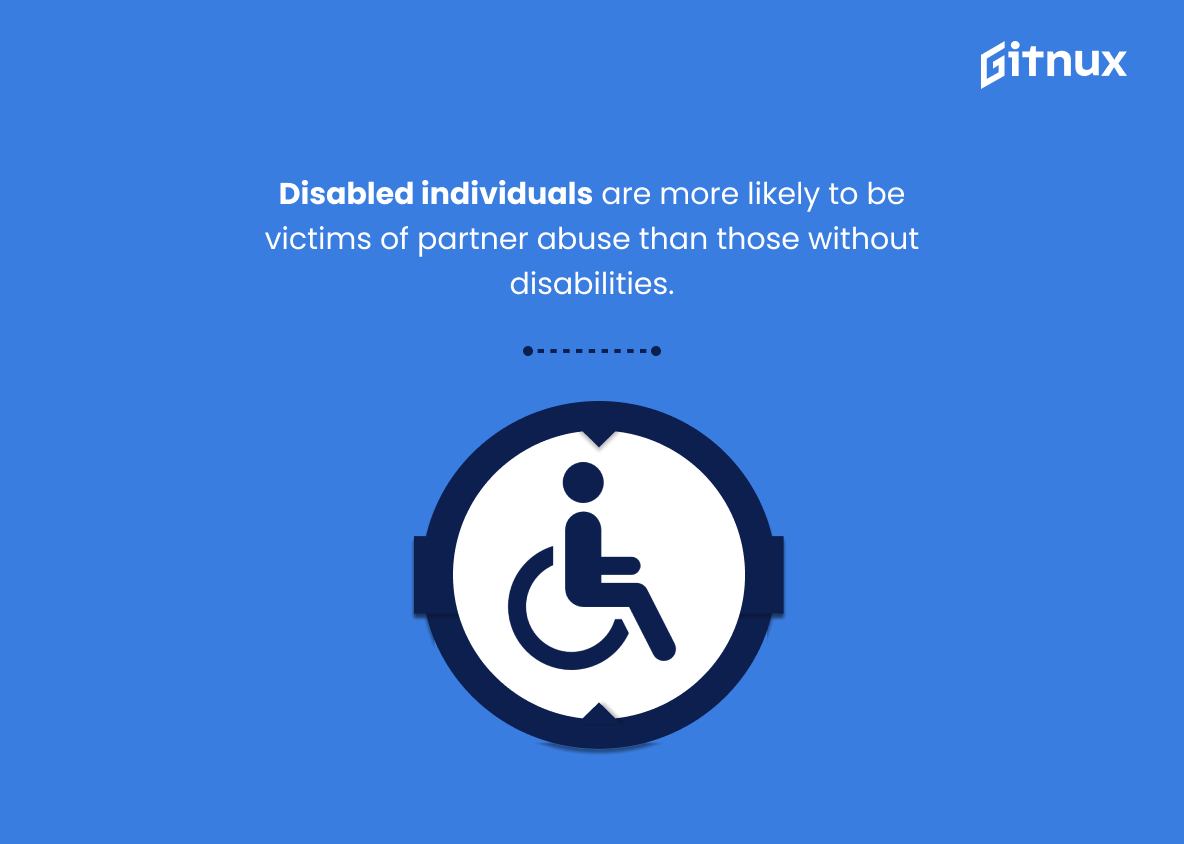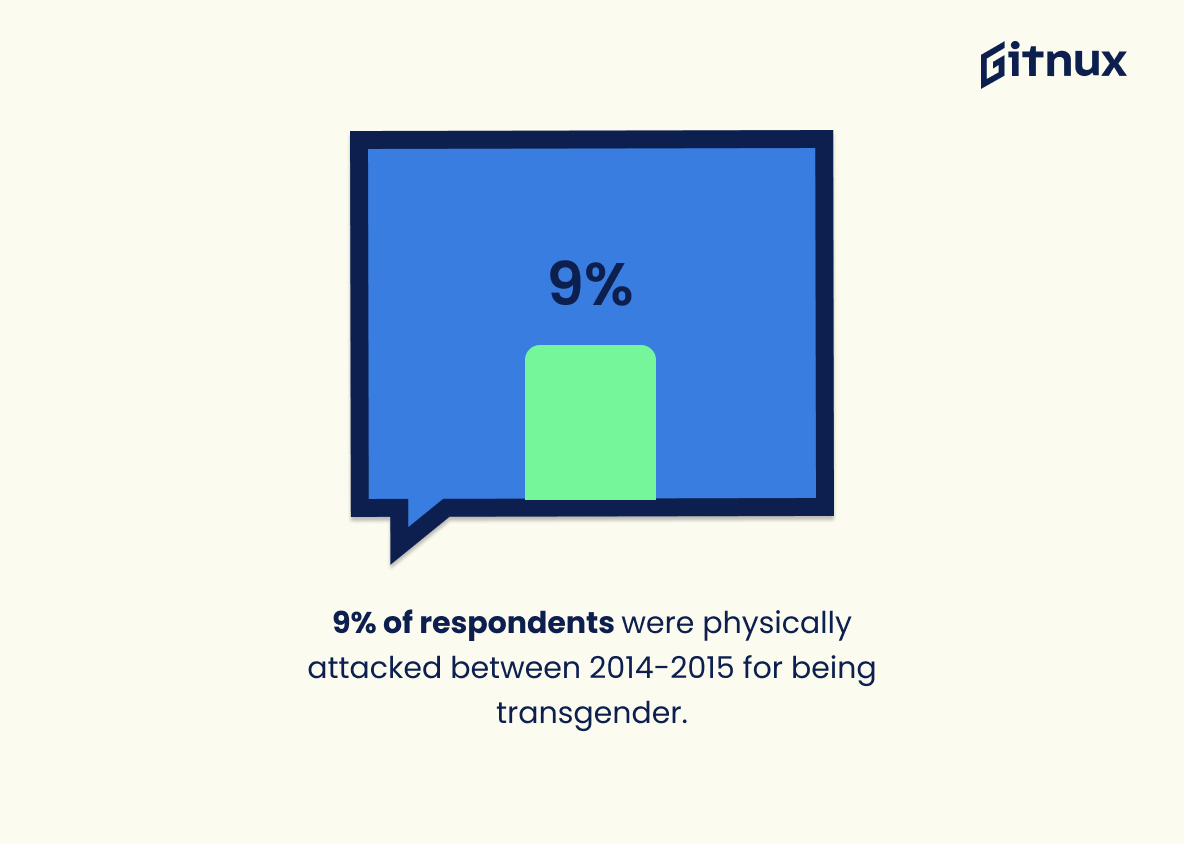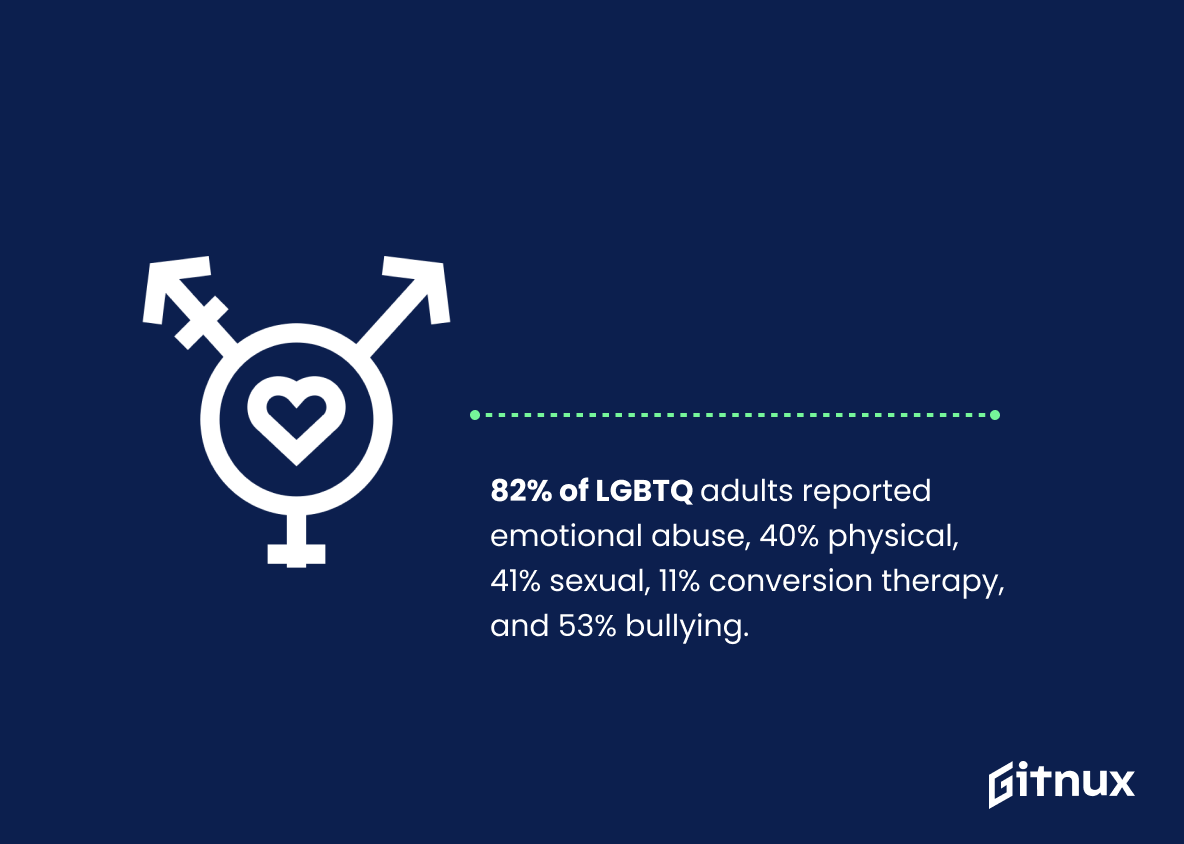Gender-based violence is a pervasive issue that affects people of all genders, ages, and backgrounds. Unfortunately, it is often underreported and misunderstood.
In this blog post, we will explore the gender-based violence statistics, including the prevalence of the issue, the types of violence experienced, and the impact it has on victims.
We will also discuss the importance of understanding these statistics in order to better address the issue. By understanding the scope of gender-based violence, we can work together to create a safer and more equitable world for everyone.
Gender-Based Violence: The Most Important Statistics
Nearly half of the male victims of domestic abuse do not tell anyone, compared to 19% of female victims.
6-19.6% of LGBTQ+ individuals are more likely to be victims of domestic abuse compared to 3.5-6.9% of heterosexual individuals.
Gender-Based Violence: Statistics Overview
Globally, an estimated 736 million women have experienced physical and/or sexual intimate partner violence, non-partner sexual violence, or both in their lifetime.
This highlights the prevalence of gender-based violence, which is a major issue around the world. It is a reminder that gender-based violence is a global issue that affects millions of women and must be addressed.
Globally 81,000 women and girls were killed in 2020, with 58% of them killed by an intimate partner or family member, equating to a woman or girl being killed every 11 minutes in their home.
Gender-based violence is often perpetrated by people close to the victim. This statistic serves as a reminder of the need for increased awareness and action to prevent gender-based violence.
Most violence against women is perpetrated by current or former husbands or partners.
Violence against women is often committed by those closest to them, rather than by strangers. This means that women may be at greater risk in their own homes and in relationships than when they are out in public. It also serves as a reminder that domestic violence is a serious issue that needs to be addressed. Knowing this statistic can help women recognize the warning signs of abuse, as well as recognize when they may be in danger. It can also help them take steps to protect themselves and seek help.
13.8% of men aged 16-74 have experienced domestic abuse in their lifetime.
Domestic abuse is not just a problem that affects women, but also men. This statistic highlights the need for more awareness and resources to be allocated to helping male victims of domestic abuse.
Pakistan has one of the lowest levels of gender equality in the world. Correspondingly, 70 to 90% of Pakistani women experience some form of physical, emotional, or psychological abuse from a spouse or partner.
There is a clear need for greater gender equality in Pakistan and the need for increased attention to protecting the safety and rights of women. This statistic serves as an indicator of the prevalence of domestic violence in the country and the urgent need to address the problem. Additionally, the statistic can be used to inform policies and initiatives to tackle gender inequality and improve the status of women in the country.
A 2018 study reveals that girls and young women with disabilities face up to 10x more gender-based violence than those without disabilities.
It demonstrates the disproportionate amount of gender-based violence that girls and young women with disabilities experience. It highlights how these individuals are particularly vulnerable to physical and sexual violence, and it emphasizes the need for greater recognition and protection of their rights. This statistic also serves as a call to action for societies to take steps to end gender-based violence against girls and young women with disabilities and to ensure that they have access to adequate support and resources.
0.5% of men and 1.0% of women between the ages of 16 and 74 experienced domestic stalking by a partner/ex-partner in 2019/20.
This information highlights the disproportionate impact of domestic stalking on women. It also demonstrates the need for further research to understand the underlying factors that contribute to this gender disparity.
In 2019/20, 6.4% of women and 0.6% of men had been sexually assaulted by a partner, and in 2020 alone, 0.5% of women and 0.1% of men had been sexually assaulted by a partner.
This demonstrates the disproportionate prevalence of sexual assault experienced by women compared to men, and the need for further research and action to reduce the prevalence of sexual assault and other forms of gender-based violence.
6-19.6% of LGBTQ+ individuals are more likely to be victims of domestic abuse compared to 3.5-6.9% of heterosexual individuals.
LGBTQ+ individuals are disproportionately more likely to be victims of domestic abuse than heterosexual individuals. This highlights the need for increased awareness and resources for LGBTQ+ individuals who are victims of domestic abuse.
Disabled individuals are more likely to be victims of partner abuse than those without disabilities.
This highlights the increased vulnerability of disabled individuals to partner abuse, which is a form of gender-based violence. It also highlights the need for more targeted interventions to protect disabled individuals from partner abuse.
Nearly 50% of male victims of domestic abuse do not tell anyone, compared to 19% of female victims, highlighting the need for more resources to support male victims of Gender-Based Violence.
There is a need for more resources to support male victims of Gender-Based Violence. This information shows that male victims are often overlooked and underserved, and that there is a need for more resources to help them. Additionally, it shows that there is a need for more awareness about the prevalence of Gender-Based Violence against men, and that more needs to be done to address this issue.
9% of respondents were physically attacked between 2014-2015 for being transgender.
This statistic highlights the prevalence of gender-based violence against transgender individuals, which is often overlooked or underreported. It also serves as a reminder of the need for greater awareness and action to address this issue.
82%, 40%, 41%, 11%, and 53% of LGBTQ adults in the US reported experiencing emotional, physical, sexual abuse, conversion therapy, and bullying respectively.
These numbers show us the prevalence of gender-based violence against LGBTQ adults in the US. It also demonstrates the need for greater awareness and support for this population, as well as the need for more effective policies and interventions to protect them.
Supplementary Statistics
35% of women worldwide have experienced either physical and/or sexual intimate partner violence or non-partner sexual violence in their lifetime.
It highlights the fact that a significant portion of women have experienced physical and/or sexual violence, either from a partner or from a non-partner, in their lifetime. This statistic serves as a call to action to address the issue of gender-based violence and to ensure that all women are safe and protected.
In the United States, 1 in 3 women and 1 in 4 men have experienced some form of physical violence by an intimate partner.
Intimate partner violence is a serious issue that affects both men and women, and that it is a problem that needs to be addressed. It is a call to action for everyone to take a stand against gender-based violence and to work together to create a safer and more equitable society.
On average, nearly 20 people per minute are physically abused by an intimate partner in the United States.
Despite the progress made in recent years, there is still a long way to go in terms of protecting victims of intimate partner violence. This statistic is a call to action for all of us to take a stand against gender-based violence and to ensure that victims of abuse are provided with the support and resources they need.
In Australia, one woman is killed every nine days by a partner or former partner.
It highlights the urgent need for action to be taken to protect women from the violence they face in their own homes. It is a call to action to ensure that all women are safe and that perpetrators of gender-based violence are held accountable for their actions.
In the UK, an estimated 4.2% of men and 7.9% of women suffered domestic abuse in 2018.
Thus, there is a disproportionate impact domestic abuse has on women, with almost double the amount of women suffering from it compared to men. This statistic is a call to action to address the issue of gender-based violence and to ensure that all individuals are protected from it.
In Latin America and the Caribbean, more than 1 in 3 women have experienced physical and/or sexual violence from an intimate partner.
There is an urgent need for action to be taken to protect women from intimate partner violence and to ensure that perpetrators are held accountable. It also serves as a call to action for governments, civil society, and individuals to work together to end this epidemic of violence.
In Sub-Saharan Africa, 45% of women will experience physical or sexual violence from an intimate partner in their lifetime.
Nearly half of all women in the region are at risk of experiencing physical or sexual violence from an intimate partner in their lifetime. This statistic is a call to action to address the issue of gender-based violence in the region and to ensure that all women are safe and protected.
In Europe, 33% of women have experienced physical or sexual violence from an intimate partner or non-partner since the age of 15.
A significant portion of women have experienced physical or sexual violence from an intimate partner or non-partner since the age of 15, and that this is an issue that needs to be addressed. It serves as a call to action to take steps to prevent and address gender-based violence in Europe.
In the Philippines, 20.4% of ever-married Filipino women ages 15-49 have experienced spousal physical violence.
This serves as a call to action for individuals, organizations, and governments to take steps to protect women from violence and to ensure that perpetrators are held accountable.
In France, more than 220,000 women are victims of domestic violence each year.
This highlights the urgent need for action to be taken to protect women from domestic violence and to ensure that perpetrators are held accountable for their actions. It also serves as a reminder that gender-based violence is a global issue that needs to be addressed in all countries.
In South Africa, three women die at the hands of their partners daily, amounting to over 1,000 deaths annually.
It paints a picture of the daily reality of women in the country, with three women losing their lives every day due to violence perpetrated by their partners. This statistic serves as a call to action to address the issue of gender-based violence and to ensure that all women in South Africa are safe and protected.
In Italy, 43.6% of women aged 18-70 have experienced some form of physical or sexual violence from men.
Almost half of all women in the country have experienced physical or sexual violence from men, a shocking statistic that should not be ignored. This statistic serves as a call to action, urging us to take steps to end gender-based violence and ensure that all women are safe and protected.
In Brazil, a woman is a victim of physical, verbal or psychological aggression every two seconds.
It paints a vivid picture of the sheer number of women who are subjected to physical, verbal, or psychological aggression every day, and serves as a call to action to address this issue.
In Mexico, 66% of women have experienced some form of gender-based violence in their lifetime.
This highlights the urgent need to take steps to protect women from violence and to ensure that perpetrators are held accountable. It also serves as a reminder that gender-based violence is a global issue that needs to be addressed in all countries.
Conclusion
Gender-based violence is a pervasive and devastating problem that affects people of all genders, ages, and backgrounds. The statistics presented in this blog post demonstrate the prevalence of this issue and the need for more action to be taken to address it.
It is essential that we continue to raise awareness and support survivors of gender-based violence, as well as work to prevent it from occurring in the first place.
We must also continue to push for changes in policy and legislation that will ensure that perpetrators of gender-based violence are held accountable for their actions. Only then can we begin to make progress in ending this epidemic.
References
Concern Worldwide: “16 things you need to know about gender-based violence”, cited March 2023. (Source)
UN Women: “Facts and figures: Ending violence against women”, cited March 2023. (Source)
Live Strong: “172 Exercise Statistics You Should Know”, cited March 2023. (Source)
ManKind: “Male victims of domestic abuse and partner abuse: 55 key facts”, cited March 2023. (Source)
VAWnet: “2015 U.S. Transgender Survey Report”, cited March 2023. (Source)
The Williams Institute: “Nonbinary LGBTQ Adults in the United States”, cited March 2023. (Source)
